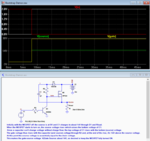Indiann
Newbie level 5

Can anyone explain, how to use the concept of BOOTSTRAP with transistor in order to raise the output.
For example: If we are using a transistor, we can able to amplify the signal by using the supply voltage.
i.e vin=5 volt and supply volt=12 volt in a transistor, we can able to get a output of 12 Volt
Here my question is how to increase the output as greater than supply volt. I am learning and doing a basic research in electronics, hope it will help me if anyone reply. And sorry, if my question asked is wrong.Advance thanks
For example: If we are using a transistor, we can able to amplify the signal by using the supply voltage.
i.e vin=5 volt and supply volt=12 volt in a transistor, we can able to get a output of 12 Volt
Here my question is how to increase the output as greater than supply volt. I am learning and doing a basic research in electronics, hope it will help me if anyone reply. And sorry, if my question asked is wrong.Advance thanks



